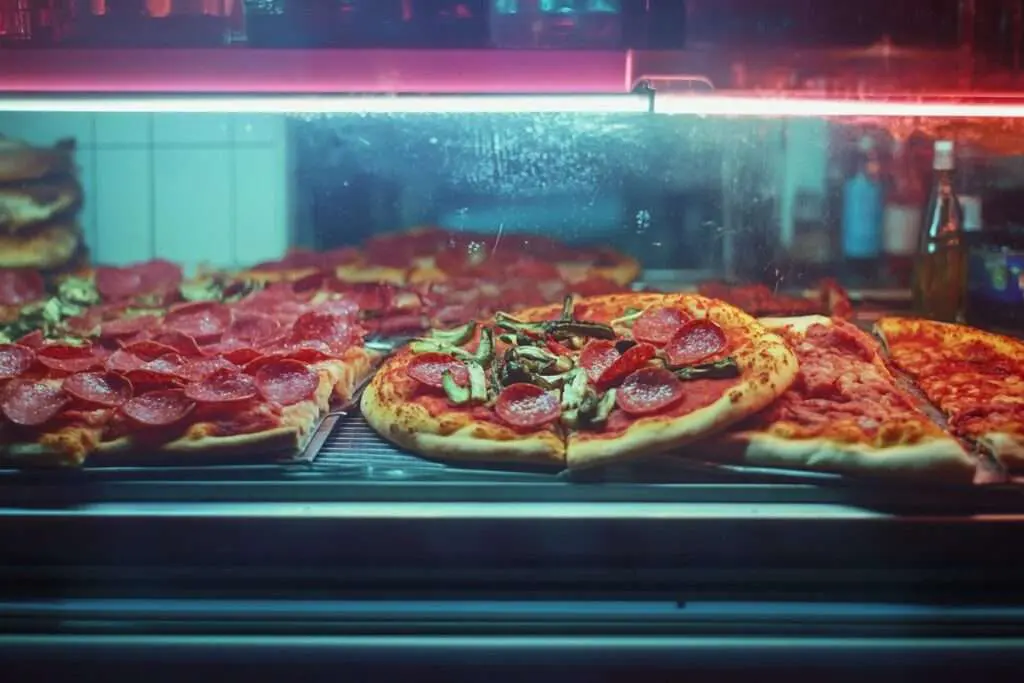Pizza perfection starts with attention to detail. Walk into any pizza shop and within seconds, your senses provide vital clues about the quality awaiting you. While a pristine counter or the aroma of fresh basil hints at excellence, certain warning signs deserve your immediate attention. Here are the telltale indicators that should make you think twice before ordering.
Neglected display cases spell trouble

A display case should showcase a pizza shop’s finest offerings. When you spot dried-out abandoned slices with curling pepperoni edges, it indicates poor inventory management. Fresh pizza shouldn’t sit for hours – quality establishments maintain a steady rotation of pies during peak hours.
Watch for vegetables that appear wilted or discolored. Premium toppings maintain their vibrancy and texture. When mushrooms shrivel and bell peppers lose their shine, it’s time to walk away. Consider this: if they’re willing to serve visibly aged pizza, what other corners might they be cutting?
Missing basics raise serious questions
The absence of fundamental pizza shop elements often reveals deeper issues. Basic accompaniments like Parmesan cheese, red pepper flakes, and oregano should be readily available. Their absence might indicate cost-cutting measures affecting other ingredients.
Pay attention to the staff’s handwashing practices. Missing soap dispensers or paper towels at prep stations suggest lax hygiene protocols. Professional pizzerias prioritize cleanliness – it’s non-negotiable in food preparation.
Storage practices reveal critical oversights

Proper ingredient storage is fundamental to food safety. If cheese, meats, or prepared toppings sit at room temperature, that’s an immediate red flag. A recent incident in Wisconsin highlighted these risks when a shared kitchen space led to contaminated dough, sending several customers to the hospital.
Watch for plastic containers without labels or dates. Professional kitchens track ingredient freshness meticulously. When you spot unmarked containers or sauce bins without lids, it indicates poor inventory management and potential health risks.
Menu complexity indicates misplaced focus
When a pizza shop’s menu spans multiple cuisines, it often signals a jack-of-all-trades, master of none situation. Great pizzerias concentrate on perfecting their core offerings rather than attempting to serve everything from sushi to pancakes.
Notice the menu board’s condition. Faded, sticky, or damaged menus suggest general negligence. If they can’t maintain their menu, imagine the state of their kitchen equipment.
Staff behavior signals broader problems

Watch how staff handle food prep. Phone use while making pizzas, bare hands touching ready-to-eat ingredients, or failing to change gloves between tasks are serious concerns. Professional pizza makers maintain high standards throughout their shift.
If employees seem unfamiliar with basic pizza-making techniques or struggle with routine orders, it might indicate inadequate training. Quality establishments invest in staff education to maintain consistent standards.
Remember: great pizza shops take pride in their craft. When multiple red flags appear, trust your instincts. The best establishments maintain high standards in every aspect of their operation, from ingredient storage to staff training. Your perfect slice awaits elsewhere.


